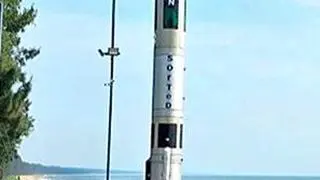It helps to get a bit of reality to complement imagination when you wish to live in the past. An archaeologist’s dig might unearth a trove of artefacts, with which he could reconstruct the past, but won’t a spritz of ancient smells help?
Barbara Huber of the Department of Archaeology, Max Planck Institute, Germany, has been nosing around quite a bit in ancient remains and her efforts have opened up a new area of science, called olfaction recreation.
In a recent paper, Huber explains that she would look for organic residues from the former substance that was used to produce a smell. These organic remains may not be evident, “but are nevertheless present on a molecular level, preserved on artefact and mineral surfaces and within the walls of ceramic vessels”.
The paper says that ancient scents “increasingly lie within the grasp of modern science”. This science is called ‘biomolecular reconstruction of scents’ and it draws upon techniques such as chromatography, mass spectrometry, sequencing technologies and modern bioinformatics to recover and analyse rare molecules preserved within ancient ‘scent archives’.
Says Huber: “The increased accessibility of ancient scents to modern science is allowing researchers to shed new light on how landscapes of smell have been shaped, managed, controlled and altered through human activities over the long term.” She adds that “such research into smell in the past is also allowing museum curators and others to more effectively evoke past worlds and experience through the re-creation of scents.”
So, indeed, you can smell the past. Imagine walking into the ancient tomb of a pharaoh and smelling the funeral! Nice, no?










Comments
Comments have to be in English, and in full sentences. They cannot be abusive or personal. Please abide by our community guidelines for posting your comments.
We have migrated to a new commenting platform. If you are already a registered user of TheHindu Businessline and logged in, you may continue to engage with our articles. If you do not have an account please register and login to post comments. Users can access their older comments by logging into their accounts on Vuukle.